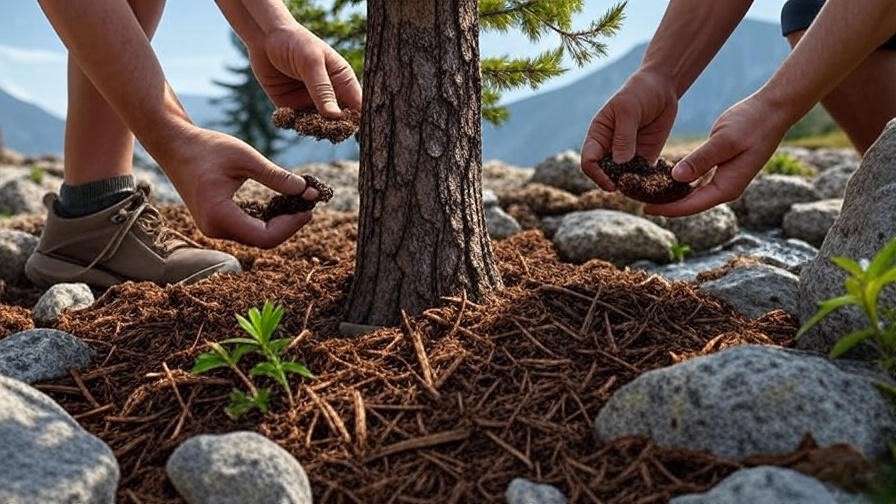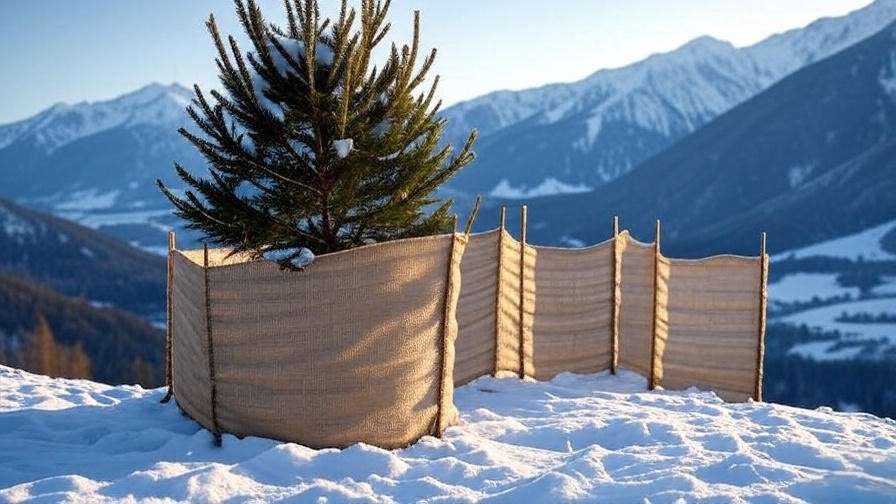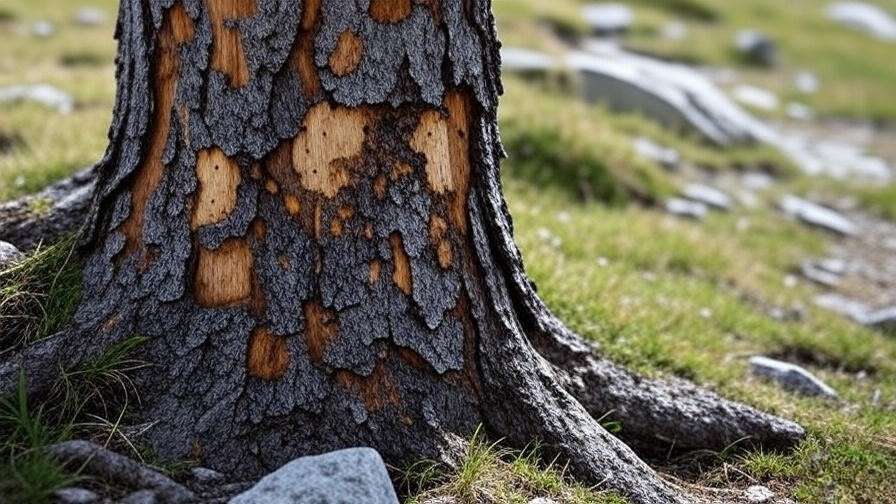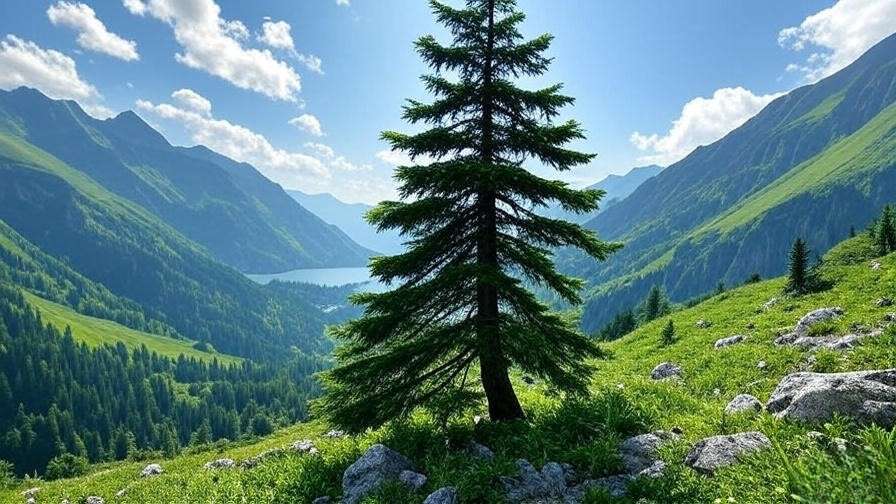Picture this: a majestic mountain tree standing tall against a backdrop of rugged peaks, its needles glistening under the alpine sun. These resilient plants are nature’s champions, thriving where others falter. Whether you’re cultivating a mountain tree in your high-altitude garden or bringing alpine beauty to a lower elevation, proper care is the key to success. In this comprehensive guide, we’ll unlock the secrets to nurturing mountain trees, helping you overcome their unique challenges and create a thriving landscape. From planting to long-term care, you’ll find expert-backed tips to ensure your trees flourish. Ready to grow a legacy? Let’s dive in!
Mountain trees, like spruces and pines, face harsh conditions—freezing winters, nutrient-poor soils, and relentless winds. This article addresses the search intent of plant enthusiasts seeking actionable advice to grow and maintain these hardy species. With insights from arborists and practical solutions, you’ll learn how to nurture your mountain tree with confidence.
Understanding Mountain Trees: What Makes Them Unique? 🏔️
Defining Mountain Trees
Mountain trees are specially adapted to thrive in high-altitude environments, where conditions test their resilience. Think Engelmann spruce, subalpine fir, or the ancient bristlecone pine—these species boast traits like thick bark, flexible branches, and needle-like leaves to survive cold, wind, and intense UV exposure. Their ability to grow in rocky, low-oxygen settings makes them both fascinating and challenging to cultivate. Whether you’re a gardener in the Rockies or experimenting in a backyard, understanding these adaptations is the first step to success.
Challenges of Growing Mountain Trees
Growing a mountain tree isn’t like tending a typical garden plant. These trees face:
- Extreme weather: Subzero temperatures, heavy snow, and fierce winds stress even the hardiest species.
- Poor soil: Alpine soils are often rocky, low in nutrients, and quick to drain.
- Water scarcity: Limited rainfall and snowmelt mean irrigation must be strategic.
Expert Insight: Dr. Emily Carter, a botanist specializing in alpine ecosystems, notes, “Mountain trees are keystone species, stabilizing soil and supporting wildlife. Proper care ensures they continue to anchor fragile ecosystems.”
Choosing the Right Mountain Tree for Your Environment 🌳
Matching Trees to Your Climate Zone
Before planting, check your USDA hardiness zone—most mountain trees thrive in Zones 2–6, where cold winters and short growing seasons are the norm. Assess your altitude, average temperatures, and precipitation patterns. For example, a blue spruce may thrive at 7,000 feet but struggle in warmer, low-altitude climates without extra care. Use online tools like the USDA Plant Hardiness Zone Map to confirm compatibility.
Popular Mountain Tree Varieties
Here are three standout mountain trees for your garden:
- Blue Spruce (Picea pungens): Known for its striking blue-green needles, it grows 30–60 feet tall and tolerates drought well. Ideal for ornamental gardens but needs space.
- Lodgepole Pine (Pinus contorta): A fast-growing tree reaching 50–80 feet, perfect for reforestation or windbreaks. It adapts to poor soils but requires full sun.
- Whitebark Pine (Pinus albicaulis): A slow-growing, high-altitude species critical for wildlife. It’s vulnerable to pests, so monitoring is key.
Table: Mountain Tree Comparison
| Tree Species | Growth Rate | Mature Height | Care Needs | Best For |
|---|---|---|---|---|
| Blue Spruce | Moderate | 30–60 ft | Low–Moderate | Ornamental gardens |
| Lodgepole Pine | Fast | 50–80 ft | Low | Windbreaks, large lots |
| Whitebark Pine | Slow | 20–50 ft | High | Wildlife support |
Native vs. Non-Native Species
Choosing native mountain trees, like those endemic to your region, supports local ecosystems and reduces maintenance. For instance, planting a whitebark pine in the Rockies aids Clark’s nutcracker birds, which rely on its seeds. Non-native species, while tempting for their aesthetics, may struggle to adapt or become invasive. Check with your local extension service to identify native options.
Tip: Create a small native plant garden around your mountain tree to boost biodiversity and attract pollinators.
Planting Your Mountain Tree: Step-by-Step Guide 🌿
When and Where to Plant
Timing is critical for mountain trees. Plant in early spring or fall to give roots time to establish before extreme weather hits. Choose a site with:
- Full sun: Most mountain trees need 6+ hours of direct sunlight.
- Wind protection: Natural barriers or fences shield young trees from alpine gusts.
- Good drainage: Avoid waterlogged areas to prevent root rot.

Preparing the Soil
Alpine soils are often rocky and low in organic matter. Test your soil’s pH (aim for 5.5–7.0) and nutrient levels using a home kit or lab analysis. Amend with:
- Compost: Adds nutrients and improves water retention.
- Peat moss: Enhances soil structure in sandy or rocky beds.
- Perlite: Boosts drainage in compacted soils.
Mix amendments thoroughly to a depth of 12–18 inches.
Planting Techniques
Follow these steps for success:
- Dig a hole twice the width of the root ball and as deep as its height.
- Place the tree so the root collar sits level with the soil surface.
- Backfill with amended soil, tamping gently to remove air pockets.
- Water deeply and add a 2–3 inch layer of mulch (bark or wood chips) to retain moisture.
- Stake young trees to stabilize against wind, but remove stakes after 1–2 years to encourage strong roots.
Example: In Aspen, Colorado, gardener Sarah Thompson planted a blue spruce using these techniques. Within three years, her tree grew 4 feet and became a focal point in her yard.
Essential Care Tips for Mountain Trees 🌞
Watering Wisely
Young mountain trees need consistent moisture to establish roots, but overwatering is a common mistake. Follow this schedule:
- Year 1–2: Water deeply (1–2 inches) every 7–10 days, adjusting for rainfall.
- Established trees: Water monthly during dry spells, focusing on deep soaking.
Drip irrigation systems are ideal for alpine climates, delivering water directly to roots without waste. Check soil moisture with a finger test—water only when the top 2 inches feel dry.
Fertilizing for Growth
Mountain trees often grow in nutrient-poor soils, so fertilization is key. Use a slow-release, nitrogen-rich fertilizer (e.g., 10-10-10) in early spring. Apply 1–2 pounds per 100 square feet, avoiding direct contact with the trunk. Over-fertilizing can burn roots, so follow package instructions carefully. For organic options, try fish emulsion or compost tea.
Pruning and Maintenance
Prune mountain trees in late winter or early spring to:
- Remove dead, damaged, or crossing branches.
- Shape the tree for aesthetics or to reduce wind resistance.
- Promote air circulation to prevent fungal diseases.
Use clean, sharp tools and make cuts at a 45-degree angle. Avoid heavy pruning, as it can stress the tree.
Expert Tip: Apply a 3–4 inch layer of organic mulch around the base (leaving a 2-inch gap from the trunk) to regulate soil temperature and retain moisture.
Protecting Mountain Trees from Environmental Stressors ❄️
Coping with Extreme Weather
Mountain trees are built for tough conditions, but they still need protection to thrive. In winter, heavy snow and ice can snap branches, while summer’s intense UV rays and heat can stress needles. Here’s how to safeguard your tree:
- Winter Protection: Wrap young trees in burlap to shield from windburn and heavy snow. Build a windbreak using stakes and fabric for exposed sites. Clear excess snow gently with a broom to prevent branch breakage.
- Summer Care: Provide temporary shade for young trees during heatwaves using shade cloth. Mulch heavily to keep roots cool and retain moisture.
Tip: Check weather forecasts and prepare for sudden temperature swings, common in alpine regions.

Pest and Disease Management
Mountain trees face threats from pests like bark beetles and diseases such as needle blight. Common issues include:
- Bark Beetles: These pests bore into trunks, weakening trees. Look for sawdust-like frass or small holes in bark. Apply neem oil or consult an arborist for systemic insecticides.
- Root Rot: Caused by overwatering or poor drainage, it shows as yellowing needles and soft roots. Improve drainage and avoid overwatering to prevent it.
- Needle Blight: Fungal infections cause browning needles. Prune affected areas and apply a copper-based fungicide.
Regularly inspect your tree for early signs of trouble. Early intervention is critical in alpine environments, where stressors compound.
Case Study: In 2023, a gardener in Montana saved their lodgepole pine from a bark beetle infestation by applying organic neem oil and removing infested branches promptly. Their proactive approach preserved the tree and inspired their community to monitor local pines.

Supporting Wildlife Interactions
Mountain trees support ecosystems by providing food and shelter for wildlife. Encourage beneficial species like birds, which eat pests, by installing nest boxes near your tree. Deter destructive animals, such as deer, with:
- Fencing: Use 6–8 foot tall mesh around young trees.
- Repellents: Apply natural sprays like garlic or chili-based solutions.
- Planting Companions: Surround trees with deer-resistant plants like lavender or sage.
Expert Insight: Wildlife ecologist Dr. Mark Reynolds says, “Healthy mountain trees create a ripple effect, supporting pollinators, birds, and soil microbes. Balanced care ensures they remain ecosystem anchors.”
Long-Term Care for Mature Mountain Trees 🌲
Monitoring Tree Health
As mountain trees mature, regular health checks are essential. Watch for:
- Yellowing Needles: May indicate nutrient deficiency or water stress.
- Stunted Growth: Could signal compacted soil or pest issues.
- Bark Damage: Cracks or peeling may suggest sunscald or mechanical injury.
Schedule an annual consultation with a certified arborist to assess structural integrity and detect hidden issues. Use a moisture meter to monitor soil conditions and ensure roots aren’t waterlogged or too dry.

Supporting Growth in Changing Climates
Climate change is altering alpine environments, with warmer temperatures and shifting precipitation patterns. To future-proof your mountain tree:
- Adjust Watering: Increase irrigation during prolonged droughts, but avoid overwatering.
- Enhance Soil Health: Add organic matter annually to maintain nutrient levels.
- Monitor for New Pests: Warmer climates may introduce new threats, like invasive beetles.
Adopt sustainable practices, such as rainwater harvesting or xeriscaping, to reduce your environmental footprint while supporting tree health.
Expert Insight: Forestry professor Dr. Laura Hanson emphasizes, “Mountain trees are resilient, but climate change demands adaptive care. Gardeners must stay vigilant to ensure these species endure for future generations.”
Common Mistakes to Avoid When Caring for Mountain Trees 🚫
Even seasoned gardeners can slip up. Avoid these pitfalls:
- Overwatering or Underwatering: Test soil moisture before watering to find the right balance. Overwatering leads to root rot, while underwatering stunts growth.
- Planting in Unsuitable Locations: Avoid shaded or waterlogged areas, which weaken trees. Ensure full sun and good drainage.
- Neglecting Pest Monitoring: Monthly inspections can catch issues early, preventing major damage.
Checklist for First-Time Growers:
- Choose a native species suited to your zone.
- Test and amend soil before planting.
- Water consistently but sparingly.
- Inspect for pests and diseases monthly.
- Protect from extreme weather with mulch and wraps.
FAQs About Mountain Tree Care ❓
Q: What’s the best time to plant a mountain tree?
A: Early spring or fall, when temperatures are cool, helps roots establish before extreme weather.
Q: How often should I water my mountain tree?
A: Young trees need 1–2 inches every 7–10 days; established trees need monthly deep watering during dry spells.
Q: Can mountain trees grow in low-altitude gardens?
A: Yes, with extra care. Choose adaptable species like blue spruce and mimic alpine conditions with well-drained soil and full sun.
Q: What are the signs of a healthy mountain tree?
A: Vibrant green needles, steady growth, and firm, undamaged bark indicate good health.
Q: How do I protect my tree from heavy snow?
A: Use burlap wraps, windbreaks, and gently brush off snow to prevent branch breakage.
Conclusion: Growing Thriving Mountain Trees 🌄
Nurturing a mountain tree is a rewarding journey that connects you to nature’s resilience. By choosing the right species, planting with care, and providing ongoing maintenance, you can cultivate trees that thrive in even the toughest conditions. From protecting against harsh winters to monitoring for pests, every step you take ensures your tree’s longevity and enhances your landscape’s beauty. Plus, you’re supporting alpine ecosystems that depend on these vital plants.
Ready to grow your own mountain tree? Start today by selecting a native species and following this guide. Share your progress in the comments or consult a local arborist for personalized advice. For a handy reference, download our free mountain tree care checklist below!













